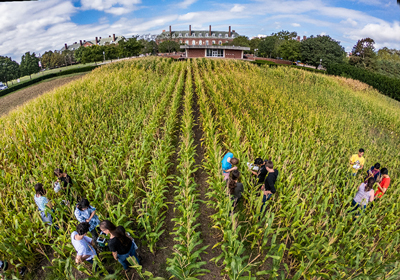
A new research collaboration will shed new light on soil samples from the University of Illinois’ Morrow Plots, the oldest agricultural research field in the United States.
The collaboration between the Biomedical Imaging Center at the Beckman Institute and the College of Agricultural, Consumer, and Environmental Sciences aims to develop new methods and models to study how different soil processes affect soil and plant health.
The analysis is inspired by previous work led by Tony Grift, a professor of agricultural and biological engineering, who studied how soil compaction affects corn yield. Researchers will use X-ray computed tomography, which is routinely used in biomedical imaging. The imaging studies including the development of image analysis techniques will be carried out in the Molecular Imaging Laboratory directed by Iwona Dobrucka, a senior research scientist at the Biomedical Imaging Center.

“We have always known that studying soil structure is important,” said Michelle Wander, a professor of natural resources and environmental sciences. “However, a lot of the methods are labor-intensive and indirect. As a result, people are looking for methods that improve our fundamental understanding of intact soils that we can more routinely apply.”
The researchers are using the Morrow Plots at the University of Illinois to develop their tools to study soil structure. "Different fertilizer regimes and crop rotations have been applied across the plots over their 140-year history and have resulted in a large contrast in soil health,” Wander said. “Studying these soils can tell us just how much agricultural practices can alter prime agricultural land.”
Currently, researchers in the U.S. do not use many soil imaging techniques. The new collaboration hopes to change that. “Our biggest goal is to become a hub for soil imaging using X-ray CT,” said Tracey Wszalek, the director of the Biomedical Imaging Center. “We are excited to look at the unique samples that can be found at the Morrow Plots and develop a routine protocol for soil analysis that can be used by soil scientists.”

